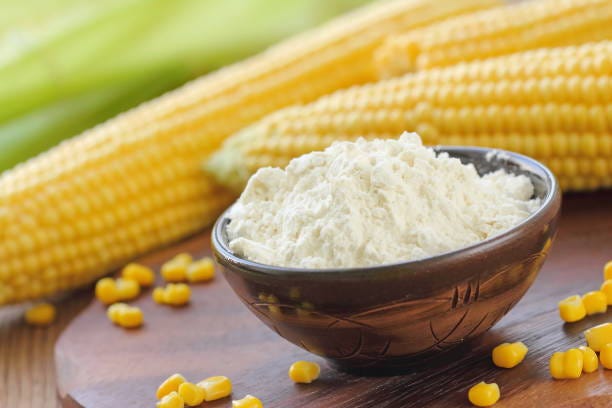A versatile food with a long history, corn flour has made its way into innumerable dishes and cuisines all over the world. In this thorough introduction, we go deeply into the world of maize flour, learning about its history, method of manufacture, usage in cooking, health advantages, and much more. Come along on this adventure as we unravel the mysteries of maize flour and learn why chefs, bakers and foodies hold it in such high regard.
Origin and Method of Production
The fine powder known as corn flour, commonly referred to as corn flour, is created by drying corn kernels. The indigenous cultures of the Americas, where maize was first cultivated thousands of years ago, are where this staple meal first emerged. To ensure that corn flour has a fine texture and high quality, numerous measures are taken during production. To remove the germ and bran from the endosperm, the kernels are first washed and then milled. The modern corn flour that adorns our kitchens is made by first grinding the endosperm into a fine powder.

Food Applications
The range of culinary applications for corn flour is endless. With its distinctive textures and tastes, it has emerged as a crucial component in meals from many different cuisines. Corn flour serves as the base for popular meals like tortillas, tamales and arepas in Latin American cuisine. It is a cherished addition to many recipes since it can generate smooth, lump-free sauces and gravies.
In the world of baking, the addition of corn flour gives baked goods a lovely crumbly texture. Its presence improves the dining experience with dishes like tender cakes and fluffy cornbread. It also offers a useful gluten-free option, making it a viable option for anyone with dietary limitations.
Varieties of maize flour
There are various types of corn flour, each having special qualities and applications. Several significant varieties are listed below:
1. Yellow cornmeal
The most popular kind of yellow corn flour is produced from this species of maize and is used in a variety of cuisines. It is a favourite for both savoury and sweet applications due to its somewhat sweet flavour and brilliant colour.
2. White Corn Flour
In comparison to its yellow sibling, white corn flour has a more subtle flavour. It is frequently used in foods where the flavour of the maize should be kept in the background, including delicate sauces and sweets.
3. Corn Flour, Blue
The vibrant colour of blue corn flour, which is created from blue corn kernels, makes it stand out. It is a common ingredient in Native American and southern cuisines and has a distinctive nutty flavour.
Nutritional Advantages
In addition to its culinary abilities, corn flour offers a variety of nutritional advantages. It contains a lot of carbohydrates, which gives you the energy you need for your everyday tasks. It also has nutritional fibre, which promotes a healthy digestive system and can help you feel fuller longer.
The B vitamins niacin and thiamine are among the vital vitamins and minerals found in corn flour. These are essential for metabolism and general health. Additionally, the antioxidants in corn flour help the body defend itself against oxidative stress.
Tips & Tricks for Cooking
Consider the following advice to get the most out of maize flour in your culinary endeavours:
Mixing Ratios: Be mindful of the mixing ratios when using corn flour in recipes. Because of its well-known thickening abilities, a little goes a long way in producing the required uniformity.
Baking without gluten: Use corn flour in place of some of the wheat flour for baking without gluten. It gives baked items a pleasant flavour and distinctive texture.
Avoiding Lumpiness: Before adding maize flour to hot liquids, make a slurry by combining it with a cool liquid. This will help you avoid lumps. This guarantees a seamless integration.
Including the Kitchen
The impact of corn flour goes beyond the kitchen. Due to its mild exfoliating qualities, it is utilised in a variety of industries, including cosmetics, where it is included in skincare products. Its versatility and promise for environmental friendliness are further demonstrated by the fact that it is used in the creation of biodegradable plastics.
Conclusion
The extraordinary ingredient maize flour has travelled across time, countries, and cuisines to become a mainstay in contemporary kitchens. From its humble beginnings as a sacred crop in the Americas, it has become a phenomenon in world cuisine. Corn flour continues to enchant our taste senses and improve our culinary experiences, from its use in classic dishes to its contemporary applications. So let maize flour be your travel partner on a savoury and nourishing excursion, whether you’re baking, cooking or discovering novel uses.

Comments
Post a Comment